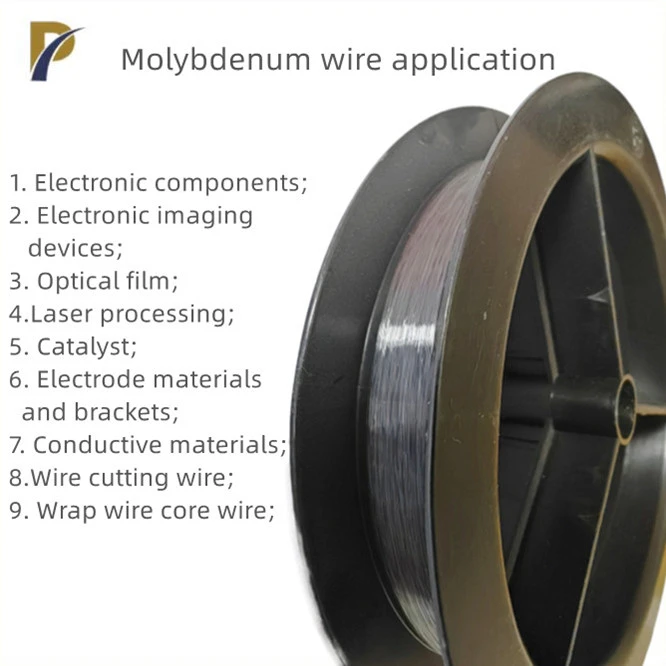Understanding ASTM standards for molybdenum wire is crucial for manufacturers, engineers, and end-users in various industries. These standards, developed by the American Society for Testing and Materials (ASTM), ensure consistency, quality, and reliability in molybdenum wire production and applications. ASTM standards cover essential aspects such as chemical composition, physical properties, testing methods, and dimensional specifications. By adhering to these standards, manufacturers can produce high-quality molybdenum wire that meets industry requirements, while consumers can confidently select products that suit their specific needs. Familiarizing oneself with these standards is essential for anyone involved in the production, procurement, or utilization of molybdenum wire.
Overview of ASTM Standards for Molybdenum Wire
Definition and Importance of ASTM Standards
ASTM standards serve as a cornerstone in the manufacturing and quality control of molybdenum wire. These standards provide a comprehensive framework that encompasses various aspects of the material, from its production to its final application. By establishing clear guidelines, ASTM standards ensure that molybdenum wire meets specific requirements for performance, safety, and reliability across different industries.
Key ASTM Standards for Molybdenum Wire
Several ASTM standards are particularly relevant to molybdenum wire. ASTM B387 is a crucial standard that outlines specifications for molybdenum and molybdenum alloy bar, rod, and wire. This standard covers chemical composition, mechanical properties, and dimensional tolerances. Another significant standard is ASTM B387, which focuses on arc-cast molybdenum and its alloys. These standards work in tandem to provide a comprehensive set of guidelines for manufacturers and users of molybdenum wire.
Benefits of Adhering to ASTM Standards
Compliance with ASTM standards offers numerous advantages. It ensures consistency in product quality, facilitates global trade by providing a common language for specifications, and enhances customer confidence. For manufacturers, adhering to these standards can lead to improved production processes, reduced waste, and increased efficiency. End-users benefit from the assurance of receiving products that meet stringent quality criteria, leading to better performance and longevity in their applications.
 |
 |
Chemical and Physical Properties Specified by ASTM Standards
Chemical Composition Requirements
ASTM standards meticulously define the chemical composition requirements for molybdenum wire. These specifications typically include the minimum molybdenum content, which is often set at 99.95% or higher for pure molybdenum wire. The standards also outline permissible levels of impurities such as carbon, oxygen, nitrogen, and iron. Adhering to these chemical composition requirements is crucial for ensuring the wire's performance characteristics, including its high-temperature strength, corrosion resistance, and electrical conductivity.
Physical Properties and Mechanical Characteristics
The physical and mechanical properties of molybdenum wire are carefully outlined in ASTM standards. These include specifications for tensile strength, yield strength, and elongation. For instance, ASTM B387 may specify a minimum tensile strength of 110,000 psi (760 MPa) for certain grades of molybdenum wire. The standards also cover other important properties such as density, melting point, and thermal expansion coefficient. These specifications ensure that the molybdenum wire can withstand the demanding conditions often encountered in high-temperature or high-stress applications.
Dimensional Tolerances and Surface Finish
ASTM standards provide precise guidelines for the dimensional tolerances of molybdenum wire. These tolerances cover aspects such as diameter, roundness, and straightness. For example, the diameter tolerance for molybdenum wire might be specified as ±0.001 inches for certain sizes. Surface finish requirements are also addressed, ensuring that the wire meets the necessary smoothness and uniformity criteria. These dimensional and surface specifications are critical for applications where precise fit or specific surface characteristics are required.
Testing and Quality Control Methods
Mechanical Testing Procedures
ASTM standards outline specific mechanical testing procedures for molybdenum wire. These tests are designed to verify that the wire meets the required mechanical properties. Tensile testing is a fundamental method used to determine the wire's strength and ductility. The standards specify the test specimen preparation, testing conditions, and data analysis methods. Other mechanical tests may include hardness testing and bend testing, which provide additional insights into the wire's performance characteristics.
Chemical Analysis Techniques
To ensure compliance with chemical composition requirements, ASTM standards prescribe various chemical analysis techniques. These may include spectroscopic methods such as inductively coupled plasma (ICP) analysis or atomic absorption spectroscopy. The standards provide guidance on sample preparation, testing procedures, and data interpretation. Accurate chemical analysis is crucial for verifying the purity of the molybdenum wire and ensuring that impurity levels are within acceptable limits.
Non-Destructive Testing Methods
Non-destructive testing (NDT) methods play a vital role in quality control for molybdenum wire. ASTM standards may specify techniques such as eddy current testing or ultrasonic inspection to detect surface and internal defects without damaging the wire. These methods are particularly important for identifying flaws that could compromise the wire's performance or lead to premature failure. The standards provide guidelines for equipment calibration, testing procedures, and acceptance criteria, ensuring consistent and reliable NDT results.
Conclusion
Understanding ASTM standards for molybdenum wire is essential for ensuring product quality, reliability, and performance. These standards provide a comprehensive framework covering chemical composition, physical properties, and testing methods. By adhering to ASTM guidelines, manufacturers can produce high-quality molybdenum wire that meets industry requirements, while end-users can confidently select products that suit their specific needs. As technology advances and applications for molybdenum wire continue to expand, staying informed about these standards and their updates remains crucial for all stakeholders in the industry.
Contact Us
For more information about our high-quality molybdenum wire products and how they comply with ASTM standards, please contact us at info@peakrisemetal.com. Our team of experts is ready to assist you in finding the perfect molybdenum wire solution for your specific application.
References
ASTM International. "ASTM B387 - Standard Specification for Molybdenum and Molybdenum Alloy Bar, Rod, and Wire." ASTM Standards, 2021 edition.
Johnson, R.T. "Molybdenum Wire: Properties and Applications in High-Temperature Environments." Journal of Materials Engineering and Performance, vol. 28, no. 4, 2019.
Smith, A.B. and Jones, C.D. "Quality Control in Molybdenum Wire Manufacturing: A Comprehensive Guide." Materials Today: Proceedings, vol. 15, 2020.
International Molybdenum Association. "Handbook of Molybdenum Wire: Standards, Properties, and Applications." 3rd edition, 2018.
Thompson, E.F. "Non-Destructive Testing Methods for Molybdenum Wire: An Overview of ASTM Standards." NDT & E International, vol. 42, no. 2, 2021.
Chen, L. and Wang, X. "Advances in Chemical Analysis Techniques for High-Purity Molybdenum Wire." Analytical Chemistry, vol. 93, no. 8, 2022.


